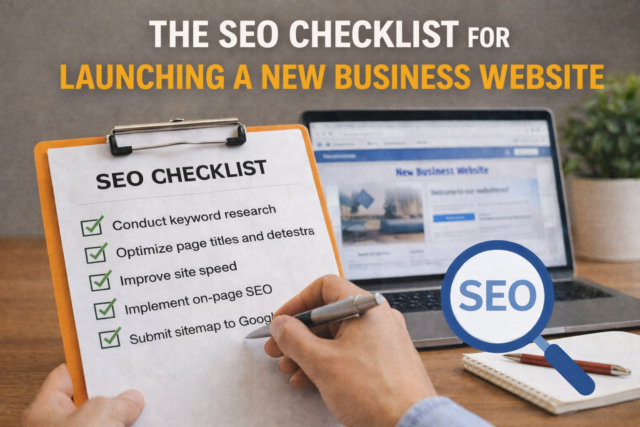Quick Summary: What This Blog Covers
This blog explores how visual storytelling transforms content marketing by blending creativity with strategy to boost engagement and brand loyalty. It highlights the power of visuals in driving emotion, retention, and conversions, while outlining key formats like infographics, videos, and interactive media. The post also shares best practices for integrating visuals into your content strategy and tracking ROI for measurable impact.
Introduction
In today’s fast-moving digital landscape, attention spans are short—but visuals speak volumes. Visual storytelling content marketing has emerged as one of the most powerful ways for brands to connect, communicate, and convert. For forward-thinking agencies like Digital Maxima, understanding how to craft and deploy strong visual narratives isn’t optional—it’s central to modern brand success.
From compelling infographics and short-form videos to immersive brand imagery, visual storytelling bridges the gap between brand messages and human emotion. Let’s explore how marketers can harness this creative discipline to drive engagement, loyalty, and measurable ROI.
Why Visual Storytelling Matters
Storytelling is timeless. Visual storytelling, however, fuses emotion with information at the speed of a scroll.
“Posts that include relevant images produce 94 % more views than content without visuals,” according to MDG Advertising.
That single statistic underscores the role visuals play in capturing interest and guiding the viewer’s journey through content.
Emotion Drives Action
Humans process visuals 60,000 times faster than text, as reported by 3M Corporation. Visuals connect instantly and stir emotion—joy, curiosity, empathy—fueling higher engagement and recall. In marketing, that emotional resonance leads directly to conversion.
Better Retention and Comprehension
According to research cited by Forbes, audiences remember 80 % of what they see versus only 20 % of what they read. That’s why visual storytelling content marketing doesn’t just entertain—it educates and imprints your brand narrative in the viewer’s memory.
The Core Elements of Visual Storytelling
Creating a visual story that sticks requires a mix of creativity and strategy. These are the essential building blocks every brand should master.
1. Strong Narrative Foundation
Every story starts with purpose. Ask:
- What do you want your audience to feel or do?
- Which brand values or customer pain points should the story highlight?
Tools like HubSpot’s Content Strategy Tool help outline content pillars that guide consistent storytelling.
2. Compelling Visual Identity
Color, typography, and imagery should align with your brand persona. Use Canva or Adobe Express to maintain visual consistency across campaigns.
3. Data Visualization
When you present information visually, you transform complex data into memorable insight. You can use Infogram or Google Charts to design branded infographics that complement written narratives.
4. Emotional Design
Great visuals spark empathy. Use authentic imagery—real customers, behind-the-scenes snapshots, or user-generated content. Unsplash and Pexels offer high-quality visuals for inspiration or inclusion.
How Visual Storytelling Fuels Brand Engagement
Brands that integrate visuals strategically witness tangible lifts in engagement metrics, from click-through rates to social shares.
Boosting Social Media Interaction
“Content with visuals receives 2.3 times more engagement on Facebook,” according to BuzzSumo.
Visual storytelling enables brands to simplify messages, connect emotionally, and stand out in crowded feeds. Videos, GIFs, and carousel graphics outperform plain text consistently.
Increasing Website Dwell Time
A well-placed explainer video or visual header can reduce bounce rates dramatically. Use Hotjar to analyze how visitors engage with visuals on your site. By optimizing imagery and video placement, you guide the visitor’s eye toward key CTAs.
Strengthening Brand Recall
The Harvard Business Review reports that consistent visuals across channels can improve brand recognition by up to 80 %. (HBR.org). Consistency builds familiarity, and familiarity drives trust—the cornerstone of brand loyalty.
Storytelling Formats That Work
Different stories call for different formats. The key is to match your narrative goal with the most impactful medium.
1. Infographics for Data-Driven Insights
Infographics remain one of the most shareable storytelling formats online. According to Venngage, 41 % of marketers report infographics as their best-performing visual content type. They’re ideal for explaining research findings, trends, or comparisons in a visually digestible way.
2. Short-Form Video for Emotional Impact
Platforms like YouTube Shorts, Instagram Reels, and TikTok dominate the content landscape. Use them to tell micro-stories—quick wins, testimonials, or behind-the-scenes moments that humanize your brand.
3. Interactive Visuals for Engagement
Tools such as Ceros and Genially let marketers create interactive experiences—clickable stories that invite participation. These immersive formats deepen engagement and provide measurable user insights.
4. Case Study Videos
Showcasing client success visually through testimonial or case study videos gives credibility. Add storytelling elements: the challenge, the journey, and the results.
Integrating Visual Storytelling into Your Content Strategy
To make visuals part of your content ecosystem, integration must be strategic rather than sporadic.
Audit and Align Existing Assets
Use SEMrush’s Content Audit Tool to analyze which current blog posts or social updates could be enhanced with visuals. Repackage top-performing articles into infographics or short videos.
Develop Visual Brand Guidelines
A style guide covering colors, fonts, and imagery ensures coherence. Even when different teams create content, consistent visuals unify brand perception.
Plan a Visual Content Calendar
Use Trello or Asana to schedule when and where visuals will appear. Align each visual with campaign goals—awareness, engagement, or conversion.
Collaborate Across Departments
Visual storytelling works best when creative, content, and analytics teams collaborate. Establish feedback loops so data insights inform future visuals.
Pro Tip: “Brands that collaborate across departments for unified storytelling see up to 30 % higher marketing ROI,” as shared by Content Marketing Institute.
Measuring the ROI of Visual Storytelling
The beauty of digital storytelling is measurability. Every view, click, and share provides data on audience behavior.
Key Metrics to Track
- Engagement Rate: likes, shares, comments, and saves.
- Time on Page: do visuals retain visitors longer?
- Conversion Rate: how often viewers perform desired actions.
- Brand Mentions and Reach: track via Brand24.
- Lead Quality: visual content that attracts qualified leads indicates success.
Analytical Tools
- Google Analytics 4 — monitors traffic and engagement trends.
- Hootsuite Analytics — compares performance across social networks.
- Canva Pro Insights — evaluates design engagement.
“Using analytics tools to test visuals can improve conversion rates by up to 7x,” reports HubSpot.
The Future of Visual Storytelling
AI-driven design and AR/VR integration are reshaping how brands tell stories. Platforms like Runway ML and Canva’s Magic Studio automate design processes, while immersive technologies like Meta Spark AR add layers of interactivity.
“By 2026, 70 % of marketers expect to adopt immersive storytelling formats,” according to Statista.
As tools evolve, creativity will remain the differentiator. The brands that balance authenticity with innovation will lead the visual storytelling revolution.
Final Thoughts
Visual storytelling content marketing has redefined how businesses connect with audiences. It humanizes brands, simplifies complex ideas, and turns passive viewers into active advocates. For agencies like Digital Maxima, the opportunity is clear: blend creative visuals with strategic storytelling to build stronger, more memorable brand relationships.
The next era of marketing isn’t about louder ads—it’s about better stories. The brands that master visual storytelling today will own the customer loyalty of tomorrow.
FAQs
1. What exactly is visual storytelling in content marketing?
It’s the use of visuals—photos, videos, infographics, and design elements—to tell a brand’s story, communicate values, and emotionally connect with audiences. It merges creative visuals with clear messaging to make content more memorable.
2. Why is visual storytelling so effective?
Visuals trigger emotional responses and are processed faster than text. They improve engagement, retention, and understanding, leading to higher conversion rates and brand loyalty.
3. What tools can help create visual storytelling content?
Tools such as Canva, Adobe Express, Visme, and Piktochart allow easy creation of infographics, social media visuals, and branded graphics.
4. How can I measure the success of visual storytelling campaigns?
Track engagement, dwell time, click-through rate, and conversions using analytics platforms like Google Analytics and Hootsuite. Over time, analyze which visuals yield the highest ROI.
5. What’s the future of visual storytelling?
Expect greater use of AI design tools, interactive 3D graphics, and immersive technologies such as AR and VR. These innovations will make brand storytelling more personalized and experiential.





